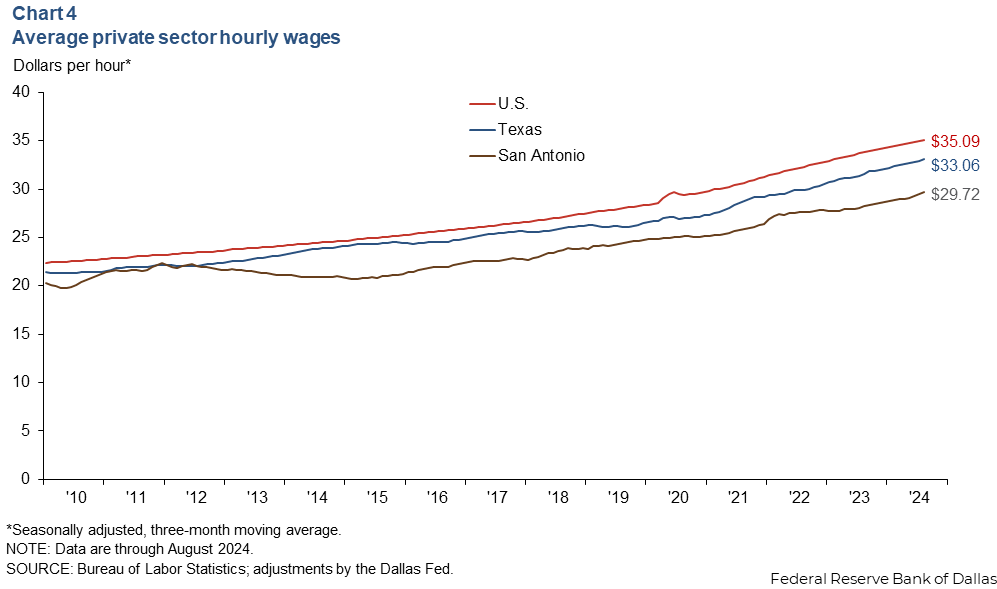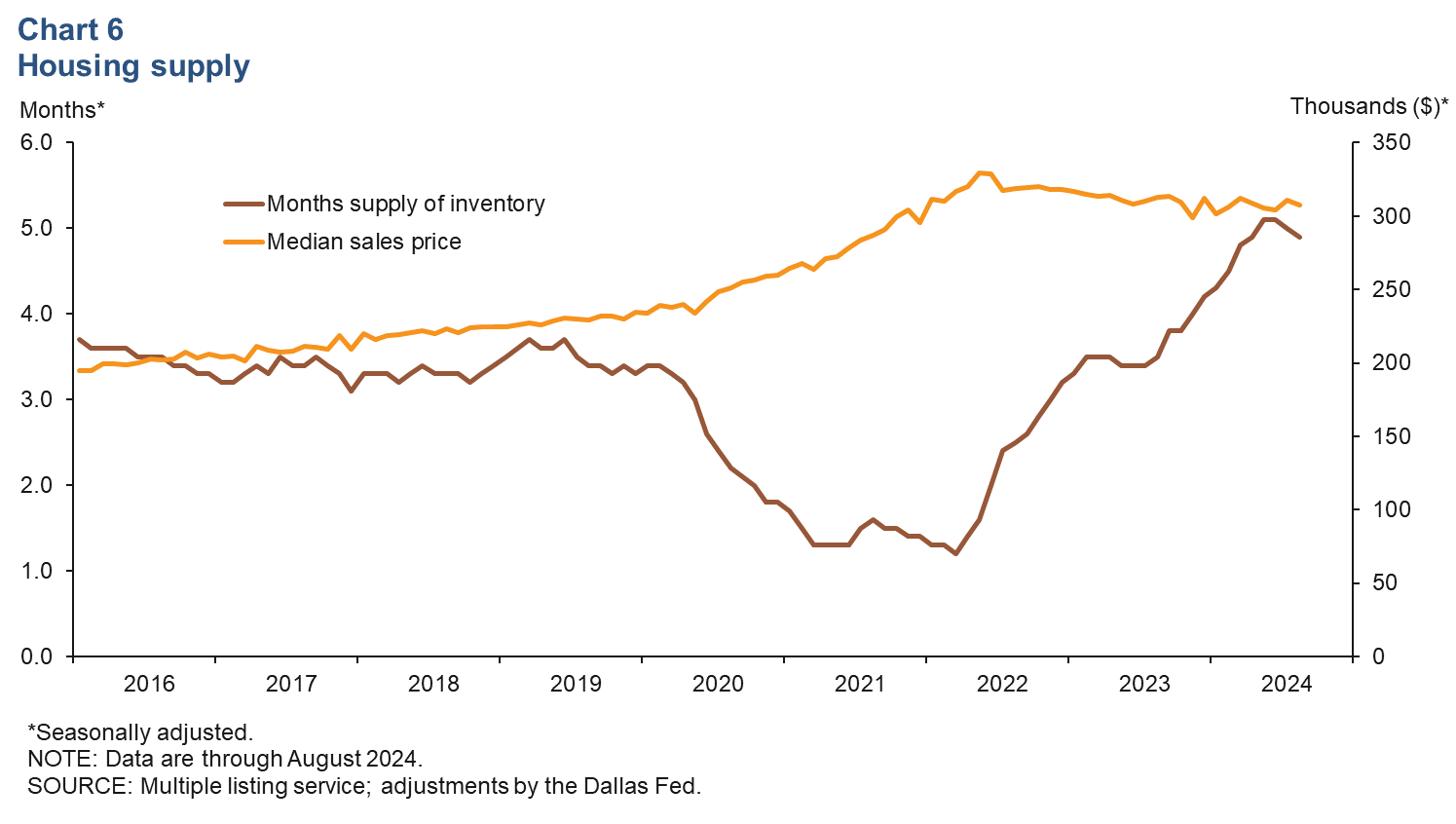San Antonio Economic Indicators

| San Antonio economy dashboard (August 2024) | |||
| Job growth (annualized) May–Aug. '24 |
Unemployment rate |
Avg. hourly earnings |
Avg. hourly earnings growth y/y |
| 4.5% | 3.8% | $29.72 | 5.3% |
In August, San Antonio payrolls grew significantly while unemployment stayed the same. Wages registered solid growth, and retail sales tax revenue increased slightly. The supply of housing inventory and home prices decreased.
Business-cycle index
The San Antonio Business-Cycle Index, a gauge of economic conditions in the metro area, increased an annualized 4.0 percent from July to August, slightly less than the 4.1 percent rise from June to July (Chart 1).

Labor market
Unemployment unchanged
The San Antonio unemployment rate remained 3.8 percent (Chart 2). The unemployment rate in Texas was higher at 4.1 percent, as was the U.S. rate, at 4.2 percent.

Employment growth strengthens
San Antonio payrolls increased an annualized 10.1 percent in August (9,403 jobs) (Chart 3). Job gains were driven mainly by government (39.3 percent, or 5,258 jobs), but also by leisure and hospitality (8.6 percent, or 989 jobs), education and health services (5.9 percent, or 863 jobs), manufacturing (17.6 percent, or 849 jobs), and trade, transportation and utilities (4.7 percent, or 807 jobs). All sectors experienced monthly growth except information (-5.3 percent, or 75 jobs). Year-to-date total nonfarm employment grew 1.5 percent in San Antonio, slower than Texas (2.2 percent) but higher than the U.S. (1.4 percent).

Wages increase
San Antonio wages grew an annualized 9.6 percent in August, while Texas wages rose 5.7 percent and U.S. wages were up 3.8 percent. The three-month moving average of hourly wages in San Antonio was $29.72, below both the state average of $33.06 and the national average of $35.09 (Chart 4). In the past year, wages in San Antonio have risen 5.3 percent, faster than the increase in Texas (4.7 percent) and the increase in the U.S. (3.8 percent).

Retail sales tax revenue
San Antonio sales tax revenue, adjusted for inflation, marginally rose 0.3 percent in August compared with the previous month. The state sales tax revenue increased 7.4 percent for the same period (Chart 5). Year-over-year San Antonio sales tax revenue increased 3.4 percent, while state sales tax revenue rose a slight 0.7 percent.

Housing
The supply of housing inventory fell to 4.9 months in August (Chart 6), higher than the state’s 4.4 months of inventory. This is the third month in a row of steady or falling inventory in the Alamo City. Inventories have remained below six months, which is generally considered a balanced housing market, since October 2012.

Prices fell 3.3 percent in August, down 4.4 percent over the past year, while median home prices in Texas fell 0.2 percent in August and 0.4 percent over the past year. Inflation adjusted home prices fell even further in San Antonio, down 6.8 percent year over year, a steeper decline than in Texas as a whole, which saw inflation adjusted prices fall only 2.9 percent.
Note: The housing data in the final paragraph was updated Oct. 23, 2024.
NOTE: Data may not match previously published numbers due to revisions.
About San Antonio Economic Indicators
Questions or suggestions can be addressed to Ethan Dixon at Ethan.Dixon@dal.frb.org. San Antonio Economic Indicators is published every month during the week after state and metro employment data are released.